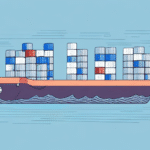What Is CBM in Shipping? An Overview of the Concept
If you're involved in the shipping industry, you've likely heard the term "CBM" being thrown around. But what exactly does CBM mean, and why is it so important? In this article, we'll provide a comprehensive overview of the concept of CBM and its role in shipping.
Understanding CBM in Shipping
Definition and Explanation
CBM, short for "cubic meter," is a unit of measurement used in shipping to determine the volume of goods being transported. Essentially, CBM represents the amount of space that a shipment occupies in a shipping container. This measurement is crucial for determining the appropriate amount of shipping space needed for the goods and for calculating shipping costs.
In international shipping, where goods are often transported in large containers, CBM helps shipping companies decide how many containers are required for a shipment. Efficient container loading maximizes space utilization and minimizes costs.
It's important to note that CBM is different from weight. While weight also influences shipping costs, CBM specifically measures the volume of the shipment. This means that even lightweight shipments can incur higher costs if they occupy significant space in a container.
CBM vs. Weight in Shipping
Both CBM and weight are pivotal factors in the shipping process, but CBM often takes precedence. Shipping companies charge based on both volume and weight, meaning a larger shipment by volume can be more expensive to transport, even if it's lightweight. Additionally, some containers have weight restrictions but not volume limits, making CBM a critical factor in determining if a shipment can fit within a container.
However, weight remains significant, especially for certain transportation modes like air freight, which have stringent weight limits. In such cases, exceeding weight restrictions can lead to additional fees or restrictions, regardless of the shipment's volume.
The nature of the products also influences the importance of CBM versus weight. Fragile or specially handled items might prioritize weight considerations to ensure proper securing and protection during transit.
Calculating CBM for Your Shipment
Step-by-Step Calculation
Calculating CBM is straightforward:
- Measure the length, width, and height of your shipment in meters.
- Multiply these three measurements to obtain the volume in cubic meters.
- Compare the total volume to the shipping container's capacity to determine the space required for your shipment.
For example, a box measuring 2 meters in length, 1.5 meters in width, and 1 meter in height would have a CBM of:
2m × 1.5m × 1m = 3 CBM
Packaging Considerations
When calculating CBM, it's essential to account for all packaging materials used to protect your shipment during transit. This includes pallets, crates, boxes, and any other materials that occupy space in the container. Accurate CBM calculations ensure that you estimate the required space correctly, avoiding overpacking or underutilizing container capacity.
Applications and Benefits of CBM
Determining Shipping Space and Costs
CBM is fundamental in determining the amount of shipping space needed and calculating associated costs. By accurately measuring the volume of goods, shipping companies can provide precise quotes and allocate appropriate container sizes, ensuring cost-effectiveness for both shippers and carriers.
Advantages of Using CBM
- Accurate Pricing: Incorporating volume ensures fair compensation for the space used, regardless of weight.
- Efficient Space Utilization: Maximizing container volume reduces the number of containers needed, lowering overall shipping costs.
- Transparency: Shippers can predict costs more accurately, avoiding unexpected charges due to space underutilization or overutilization.
- Environmental Benefits: Efficient use of space leads to fewer containers required, reducing carbon emissions and fuel consumption.
CBM and Freight Charges
Impact on Shipping Costs
Freight charges are significantly influenced by CBM. Shippers are typically billed based on either the actual weight or the CBM of their shipment, depending on which measurement results in a higher cost. This is known as the chargeable weight.
For instance, if a shipment weighs 10 kg but occupies 5 CBM, and the shipping rate is higher for CBM, the cost will be calculated based on the volume rather than the weight.
Container Types and CBM
The type and size of the shipping container also affect CBM charges. Common containers include:
- 20-foot Container: Approximately 33 CBM capacity.
- 40-foot Container: Approximately 67 CBM capacity.
- 40-foot High Cube Container: Slightly larger, offering more CBM.
Choosing the right container size based on CBM ensures that shippers do not pay for unnecessary space or face additional charges for oversized shipments.
Tools and Best Practices for Calculating CBM
Top Tools and Resources
Several tools and resources assist in calculating CBM accurately:
- Online CBM Calculators: Websites like Flexport CBM Calculator help shippers quickly determine the volume of their shipments.
- Shipping Company Tools: Many shipping companies offer their own CBM calculators on their websites for ease of use.
- Mobile Apps: Applications available on smartphones allow for on-the-go CBM calculations by inputting shipment dimensions.
Ensuring Accurate Measurements
Accurate CBM calculations are vital for fair pricing and safe transportation. To ensure precision:
- Double-Check Dimensions: Verify the length, width, and height measurements of your shipment.
- Consider Irregular Shapes: For non-rectangular items, break them down into smaller, regular shapes and calculate each segment separately.
- Professional Assistance: For large or complex shipments, hiring a professional to measure and calculate CBM can prevent errors.
Remember that CBM is just one factor influencing shipping costs. Weight, distance, and the mode of transportation also play significant roles in determining the final price.
Challenges and Future of CBM in Shipping
Potential Limitations
While CBM is a valuable tool, it has its limitations:
- Weight Distribution: CBM does not account for how weight is distributed within a container, which can affect safety and stability.
- Inaccurate Measurements: Errors in CBM calculations can lead to unexpected costs or shipping delays.
- Not Cost-Effective for All Goods: For bulky yet lightweight items, CBM-based pricing might result in higher costs compared to weight-based systems.
- Specialized Cargo: Hazardous or perishable goods may require specialized shipping methods that CBM alone cannot adequately address.
Future Trends and Developments
The role of CBM in shipping is expected to evolve with advancements in technology and data analytics. Future trends include:
- Enhanced Accuracy: Improved measurement technologies will provide more precise CBM calculations.
- Integration with Logistics Software: Seamless integration of CBM calculations with supply chain management systems will optimize shipping processes.
- Sustainability Focus: Emphasizing efficient space utilization to reduce environmental impact through lower carbon emissions and fuel consumption.
Real-life Examples of Successful CBM Implementation
Numerous businesses have successfully implemented CBM in their shipping processes:
- Furniture Companies: By accurately measuring CBM, furniture businesses can optimize container space, reducing the number of containers needed and minimizing shipping costs.
- E-commerce Businesses: Online retailers shipping fragile or uniquely shaped items use CBM to ensure proper pricing and packaging, enhancing customer satisfaction and reducing returns.
- Manufacturing Firms: Manufacturers transporting large machinery or components rely on CBM to plan shipments efficiently, ensuring timely delivery and cost management.
Conclusion: CBM in Shipping
In conclusion, CBM is a critical measurement in the shipping industry, essential for determining appropriate container sizes and accurate shipping costs. By understanding the importance of CBM and mastering its calculation, shippers can ensure their goods are transported safely, efficiently, and cost-effectively. Staying informed about the latest tools and best practices will further enhance the shipping process, contributing to smoother operations and better business outcomes.




















